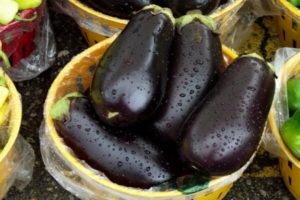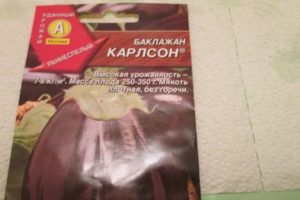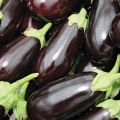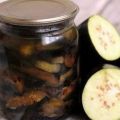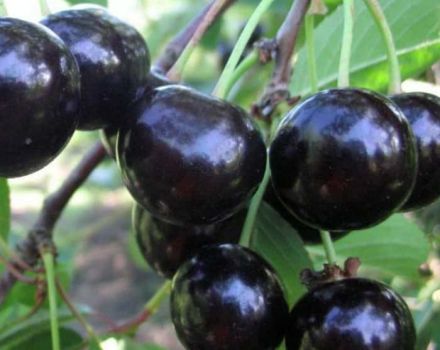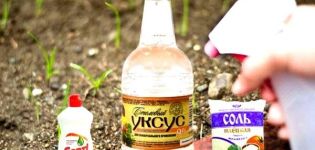Names and descriptions of the TOP 11 best eggplant varieties for Siberia
Summer in Siberia is short. In these conditions, vegetables do not always have time to ripen. But many gardeners, picking up early and mid-early varieties, have adapted to growing eggplants and other vegetable crops. Planting is carried out both in open and closed ground. Further information about the best varieties of eggplant for Siberia, the peculiarities of growing crops in this region.
The best varieties of eggplant for Siberia and the Urals
In the northern regions, preference is given to early and medium early varieties of eggplant. This condition must be observed for the reason that the crop has a long growing season. The best varieties of eggplant for Siberia and the Urals are as follows.
Precocious 148
The height of the bushes varies between 20-50 centimeters. The shape of the vegetables is elongated pear-shaped, the color is purple. Fruit weight - 150-200 grams. Siberian early ripening eggplant 148 gives good yields even in unfavorable weather. Fruiting outdoors and under cover.
Siberian prince
The variety is grown mainly in greenhouse conditions. The Siberian prince reaches a height of 50 centimeters. The fruits are shaped like a cylinder. The middle is curved. Fruit weight - 250-300 grams, color - dark purple.
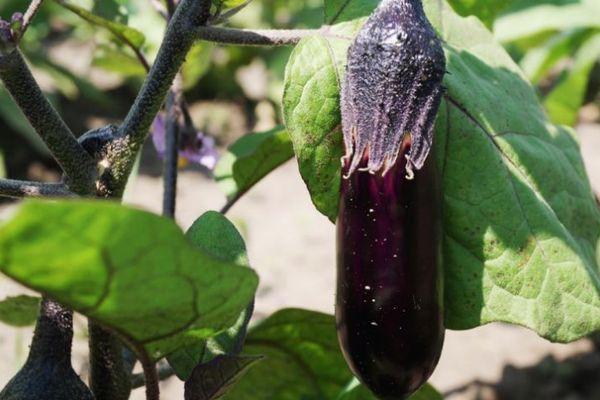
White Night
The bushes reach a height of 70 centimeters. 7-8 pear-shaped fruits of white or yellowish color grow on them. The length of the eggplant is 15-20 centimeters. Ripening occurs on the 105th day after planting. If early varieties are planted in a greenhouse, you can harvest 10 days earlier.
Bull heart F1
The height of the bushes is 70-80 centimeters. Eggplants ripen in 110-115 days. The weight of the oval fruits is about 300 grams. The skin is purple. You can plant the Bull Heart F1 under a film shelter and on an open area.

Nutcracker F1
This is a high-yielding hybrid. The fabulous eggplant forms oval fruits with a deep purple color. Their weight is 250-300 grams. The pulp does not contain bitterness. The mid-early variety is suitable for growing under a film cover.
Diamond
The variety is popular not only in Siberia, but also in other regions. The bushes are fruitful: up to 8 kilograms of eggplant are harvested from a square meter of area. The fruits are purple, almost black. Their length is about 17 centimeters, and their weight is 150-180 grams. The pulp is greenish.

Japanese dwarf
Eggplant forms fruit well not only in a closed but also in an open area. Dwarf variety: bushes do not exceed a height of 40 centimeters. The fruits are shaped like a pear.A light flesh forms under the dark purple skin.
Baltic
This is another variety used for cultivation in the northern regions. The height of the bushes varies between 45-75 centimeters. The purple fruit is cylindrical in shape, 12-20 centimeters long.
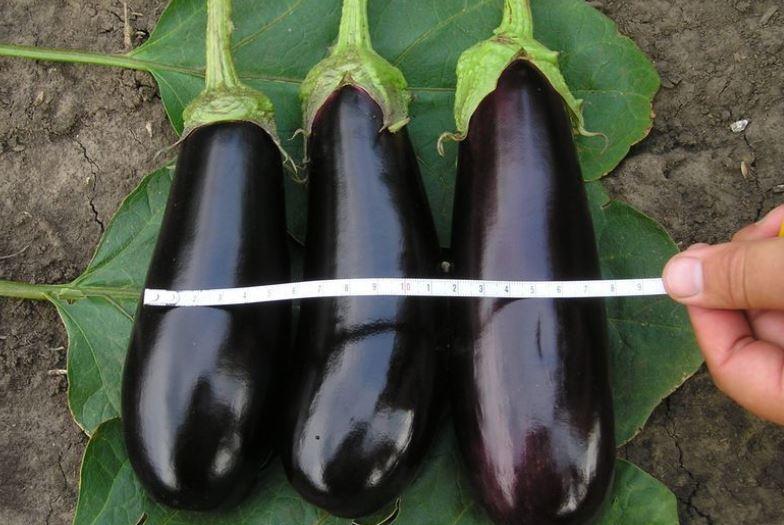
Czech early
The period from germination to technical maturity is 90-100 days. The fruits are large, ovoid. The skin is purple, the flesh is without bitterness. Eggplant mass - about 500 grams. The culture intended for the northwest is planted under a film shelter.
Black brilliant
This is one of the early maturing eggplant varieties. The fruits ripen 105-110 days after planting. The height of the bushes is 50-60 centimeters. Fruit weight - 200-250 grams. The light flesh is covered with a dark purple skin.
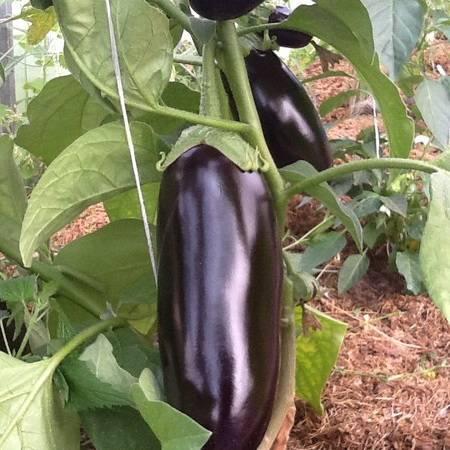
Matrosik F1
The variety attracts attention with its lilac-white striped fruits. They can be consumed raw. Bushes reach a height of 70-80 centimeters. They begin to bear fruit on the 105th day. The eggplant is pear-shaped, weighs 250-400 grams. In Siberia, they are grown under cover.
Additional Information. To get rid of the solanine, which gives the eggplant bitterness, the sliced fruits are placed in a bowl and sprinkled with salt. After 30 minutes, the bitter juice is poured out of the dishes.
Features of growing crops in this region
In harsh regions with short summers, eggplants are grown by seedlings. In this case, gardeners will have time to remove as many fruits as possible from the bush.
Sowing seedlings
Sowing is done in late February or early March. Seedlings will appear in the middle of the first spring month. It is best to sow eggplant directly into peat pots. Then, with the subsequent transplant into the ground, the seedlings will hurt less. If there are no pots, a shallow container is selected.

Sowing is done as follows:
- seeds for 20-30 minutes are placed in a disinfectant solution, washed off with water;
- the box is filled with a substrate consisting of garden soil, peat, sand;
- make grooves 1-1.5 centimeters deep;
- sow seeds, cover them with a substrate;
- sprayed with water from a spray bottle.
The box with crops is covered with foil and placed in a warm place. The room temperature should be up to 27 ° C.
Seedling care
The film is removed every day, the crops are aired. When the sprouts hatch, the box is transferred to a well-lit room with an air temperature of about 18 ° C. In such conditions, he is kept for 5 days. Then the temperature is increased to 23-25 ° C.

Moisten the earth as needed. Watering is carried out, as a rule, 1-2 times a week. Excess water must drain through the drain holes. Otherwise, the seedlings may be affected by a fungal disease. To grow strong, healthy bushes, the soil is fertilized. The first feeding is carried out 2 weeks after germination. To do this, 1 tablespoon of urea is diluted in 10 liters of water. Nutrients are applied to moist soil.
When 3-4 leaves appear on the bushes, they are transplanted into small pots. In separate containers, the seedlings will have more room for development. Before planting the eggplants on the site, they are tempered. For this, the plants are taken out every day, first for several minutes, then for several hours.
Disembarkation to a permanent place
Seedlings can be planted in the greenhouse at the end of April. Eggplants are planted on a plot in Siberia in mid-June. By this time, the soil has time to warm up well. The garden bed is prepared the previous summer as follows:
- dig a hole 20-25 centimeters deep;
- organic material is poured: sawdust, grass, clean foliage, small branches;
- several times watered with infusion of bird droppings;
- fall asleep with earth;
- They enclose the garden with boards.
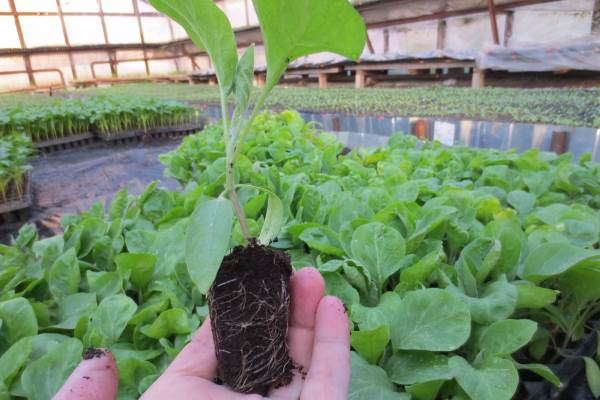
In the spring, the site is sprinkled with wood ash.7-10 days before planting, the eggplant is watered with a mullein solution, heated with a film. Then they loosen the earth, dig holes 15-20 centimeters deep. The distance between the bushes is 35 centimeters. Immediately after planting, the culture is watered with warm water. The root circle is sprinkled with mulch. The organic material will prevent rapid evaporation of moisture from the depths of the earth. If the variety requires further garter, pegs are immediately driven in.
Care advice
The initial care consists in timely watering, followed by loosening of the soil. Bushes form. Eggplants are fed several times a season.
In the open field
Eggplants are moisture-loving plants. At least buckets of water are consumed per square meter of area. Watering is carried out after the top layer of the soil dries up. The procedure is performed in the morning or evening.
Note! Water the eggplant only at the root. Overhead irrigation can adversely affect crop production.
1-2 days after watering, the soil is loosened. Weeds around the plants are removed. Eggplants begin to feed 10 days after planting, then during flowering and fruiting. A complex mineral fertilizer is used.
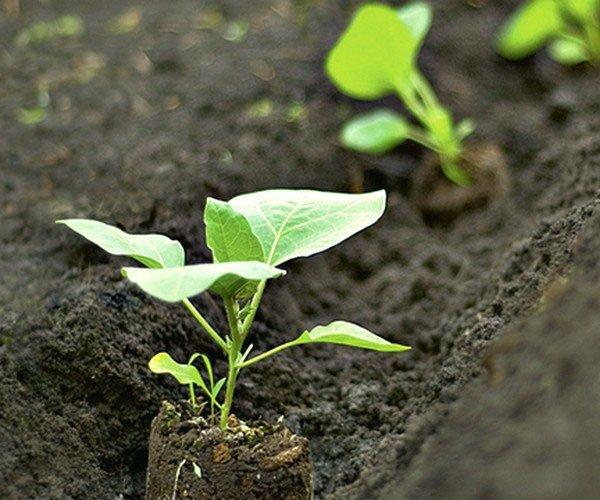
In order for eggplants to mature in the climate of Siberia, it is necessary to form bushes. Unnecessary stepchildren and part of the ovaries are removed. As a result of the performed procedure, the plants direct all their forces to the development of 7-8 fruits left on them.
In the greenhouse
The air temperature in the greenhouse is maintained at 25-30 ° C. During the day, the room is ventilated. Otherwise, the fruit may not be tied. Rainfall does not penetrate into closed ground. Therefore, they irrigate the land around the eggplants in the greenhouse more often than in the open area.
Tall varieties of culture are tied to a support. At the bushes that have reached 30 centimeters in height, pinch the top. After that, shoots will actively begin to grow. The optimal amount is 5 stems per plant. The rest are removed.

Plant protection from diseases and pests
Under unfavorable conditions, eggplants can be subject to diseases and pests. The main ones are:
- Blackleg. Occurs with excessive moisture. There is no cure. Bushes are removed from the garden, the earth is disinfected.
- Late blight. In this disease, leaf plates become stained, the fruits are deformed. For prevention and treatment, Fitosporin is used.
- Powdery mildew. The fungus affects trunks, leaves, fruits. The disease can be detected by a white bloom on all aboveground parts of the culture. Fungicides are used to fight the fungus.
- Colorado beetle. The pest eats delicate leaves, weakening the plants. It is harvested by hand or treated with insecticides.
- Aphid. The insect sucks out cell sap from the leaf plates. Large colonies of aphids can kill eggplants. Fitoverm, ash infusion is used against the pest.
Important! Chemical treatment is stopped one month before harvesting.
Harvesting and storage
In Siberia, eggplants are harvested in August. Their pulp becomes elastic by this period. Depending on the variety, the skin of ripe fruits becomes white, purple, lilac. You need to harvest on time, otherwise the pulp will become tough, bitter.
Cut off the fruit with a sharp pruner, with part of the stalk. They are wiped with a dry cloth and placed in a cool room. As a rule, eggplants are stored for 2-3 weeks. If they are wrapped in paper, laid out on straw, covered with dense material, the shelf life will increase by 1-2 months.
